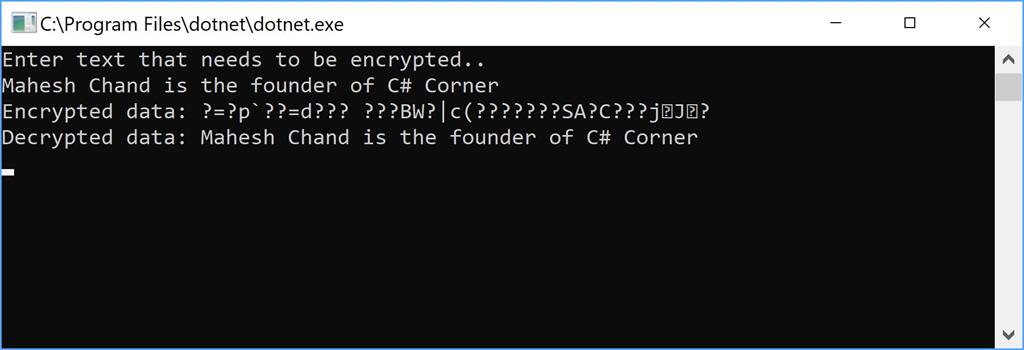

But, if I decrypt with the same IV as used in encryption, I see my original plain text message. Using IV we randomize the encryption of similar blocks. Now, I tried decryption with a random IV (different from the one used for encryption), and got gibberish text, instead of the original plain text message which I expected.
#Encrypto decrypt key iv code
You can have a look at the source code here to get an idea how the key and IV derivation takes place ( EVP_BytesToKey is not described that well, it is a proprietary mechanism within OpenSSL). The AES engine requires a plain-text and a secret key for encryption and same secret key is used. It makes sure that the key and IV are always different, even if you use the same password. The salt is an input parameter to the PBKDF. This is a function akin to PBKDF1 which doesn't use many iterations. In the case of OpenSSL the method used is EVP_BytesToKey.
#Encrypto decrypt key iv password
The key and IV are both calculated from the password using a PBKDF. Therefore the second question is: how does the decryption program know the iv which is needed to decrypt the file? Or, to put it differently, if the iv is embedded in the encrypted file (like the salt is), how is it done? Now, while I can see the salt in the encrypted file and I provide the key to the program, I do not type the iv nor I can see the iv in the encrypted file. Openssl enc -d -aes128 -in file2.enc -out -pĪnd I get the same WITHOUT providing the iv! salt=237F07334625A768

Openssl enc -aes128 -in file.txt -out file2.enc -p These keys will not be used for encryption of any kind. They use an AWS KMS keys in the encryption operations and they cannot accept more than 4 KB. These keys will only be used for is authentication, including signing messages and signing during session key exchange. Now I do the same (same plaintext, same key) without providing the iv: These operations are designed to encrypt and decrypt data keys. Which is its relation with my key "1234"? (It looks an md5 hash. However, if an exception is raised, the code. That example and this example specify the same key. You can decrypt the file by using the symmetric decryption example in Decrypting Data. Openssl enc -d -aes128 -iv BABA -in file1.enc -out -pĪnd obviously I get the same salt, key and iv as before.įirst question is: in which sense "0326A1E8F4875B26FE2D04E02425C5AD" is the "key"? I have to decrypt some strings which are AES encrypted. If the code is successful, it creates an encrypted file named TestData.txt and displays the following text to the console: Console. Openssl enc -iv BABA -aes128 -in file.txt -out file.enc -p Suppose I encrypt with a key "1234" a file containing "abcd" with:


 0 kommentar(er)
0 kommentar(er)
